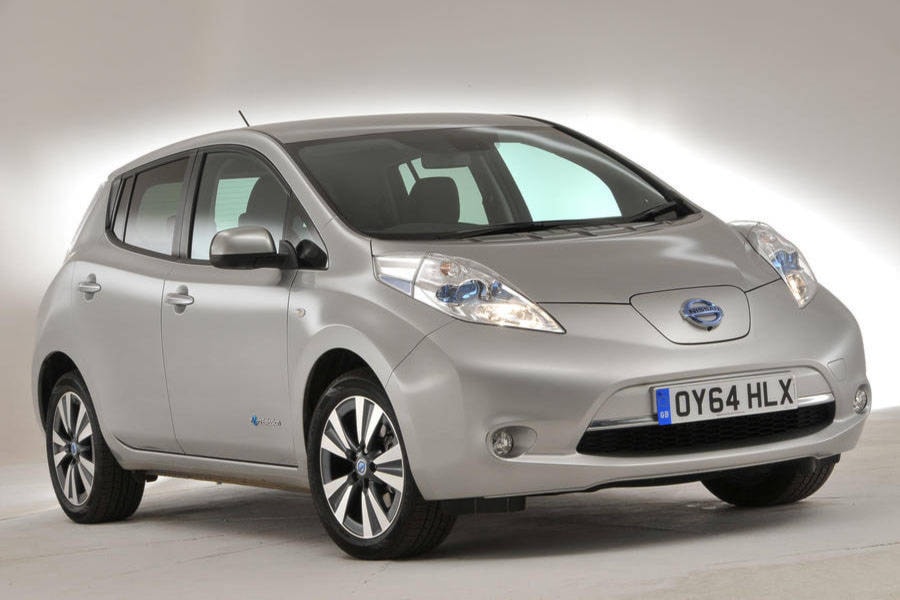Some of the latest Clean Energy Vehicle (CEV) models will be on display Saturday at the Kelowna Winter Farmer’s Market in Parkinson Recreation Centre.
Among those vehicles will be a Nissan Leaf, Chevrolet Bolt, BMW 530e and Ford Fusion Energi.
A Kelowna dealership, Kelowna Nissan, will also be presented the Green Star Dealer Award from the New Car Dealers Association of B.C. for selling the most electric cars in the Interior this past year.
Blair Qualey, president and CEO of the New Car Dealers Association, responded to some email questions from Black Press about the state of development for the CEV program growth in B.C.
What is the provincial Clean Energy Vehicle program doing to help encourage growth of clean energy vehicles?
The Clean Energy Vehicle program is a provincial government point of sale incentive program—the purchase price rebate initiative is part of this program. What that means, is British Columbians can receive up to $5,000 off qualifying electric vehicles (EVs), and an additional $1,000 for hydrogen fuel cell vehicles. Through this program, it has supported the addition of over 4,000 EVs on our roads since 2011. We are also raising awareness and educating British Columbians on the positives of choosing green, sustainable transportation. A lot of what we do is debunking myths, and letting people know that an EV can get you where you need to go, while saving you money at the pump. That’s one of the reasons we’re in Kelowna this weekend, to help get the local community familiar with EVs so they can see firsthand that clean energy vehicles have the latest tech, are spacious and have reliable ranges to get you from point A to B.
What is the percentage of electric vehicles in B.C. currently on the road? And in Canada overall?
According to Fleetcarma, B.C. is expected to see the second highest increase in the rate of adoption in the country, with a 48.59 per cent increase over 2016, with a projection of 3,167 total new EV sales this year. As of November 2017, there’s a total of 41,695 EVs on the road in Canada. In 2016, there were only 20,000 so that number has doubled in a year and a half.
What is being done in infrastructure research and initiatives at this point to address access to battery recharging stations?
We are encouraging government to continue to invest in charging stations across the province. Right now, the biggest barrier in EV adoption is lack of infrastructure in places where people conduct their lives. Range anxiety remains a major concern of B.C. consumers, so I’m hoping that as EVs become more and more popular in our province, we will see more infrastructure being developed to accommodate that…In British Columbia, provincially funded programs like the Fleet Champions Program and the Multi Unit Residential Building (MURB) Charging Program provide reimbursement and support for electric fleets and charging station installation in residential buildings. The MURB Charging Program, in particular, has been widely successful in the province and can easily be expanded to include commercial buildings as well, which many developers are looking to do.The MURB Charging Program provides a rebate of up to 75 per cent or up to $4,500 per each Level 2 charging station installed in a multi-unit residential building. Residential building managers and owners are required to apply for the incentive, but once they get approved, they receive unparalleled support during the installation process through the program.
What should people be aware of or thinking about when looking over the CEVs on display at the Market Electric Avenue event on Saturday? Is it all about gas mileage savings or are other factors getting overlooked?
Experiencing an EV first-hand at the Farmer’s Market will showcase the gas-mileage savings, the longer ranges (up to 380 kilometres), the cutting-edge technology, how spacious they are—not to mention, the significant savings that you have access to. It’s really an opportunity to get in the car and have a feel for it. We’re confident that everyone who experiences them at the Farmer’s Market will feel like they are comparable to the gas-powered vehicles they’re traditionally used to.
Where does the Okanagan stand in terms of the growth of charging networks across Canada? Are we at the forefront or lagging behind?
There was a fast charger installed last year in (West Kelowna) and currently over 85 charging stations in the region. I think the Okanagan, like the rest of the region is making great strides in developing the charging network. It’s important that charging stations continue to be a top priority across B.C. as demand for CEVs continue to grow.
Looking into the CEV crystal ball, what is the hope or expectation of CEVs being on the road and the expanding of the charging networks 10 years from now?
B.C. is a leader on the electric vehicle front. We currently have the highest adoption of electric vehicles per capita in the country. Over the next 10 years, I see B.C. continuing to lead the charge on the electric vehicle front in Canada. We’re seeing more and more makes and models being unveiled and available each year. I’m sure that 10 years from now there will be more EVs to choose from, perhaps even more than their gas-powered counterparts. I also think that as technology continues to develop, we’ll see EVs with significantly longer ranges, cutting-edge technology, and who knows—self-driving EVs may be the norm by then.
To report a typo, email: edit@kelownacapnews.com.
<>@BarryGerding
barry.gerding@blackpress.ca
Like us on Facebook and follow us on Twitter.
